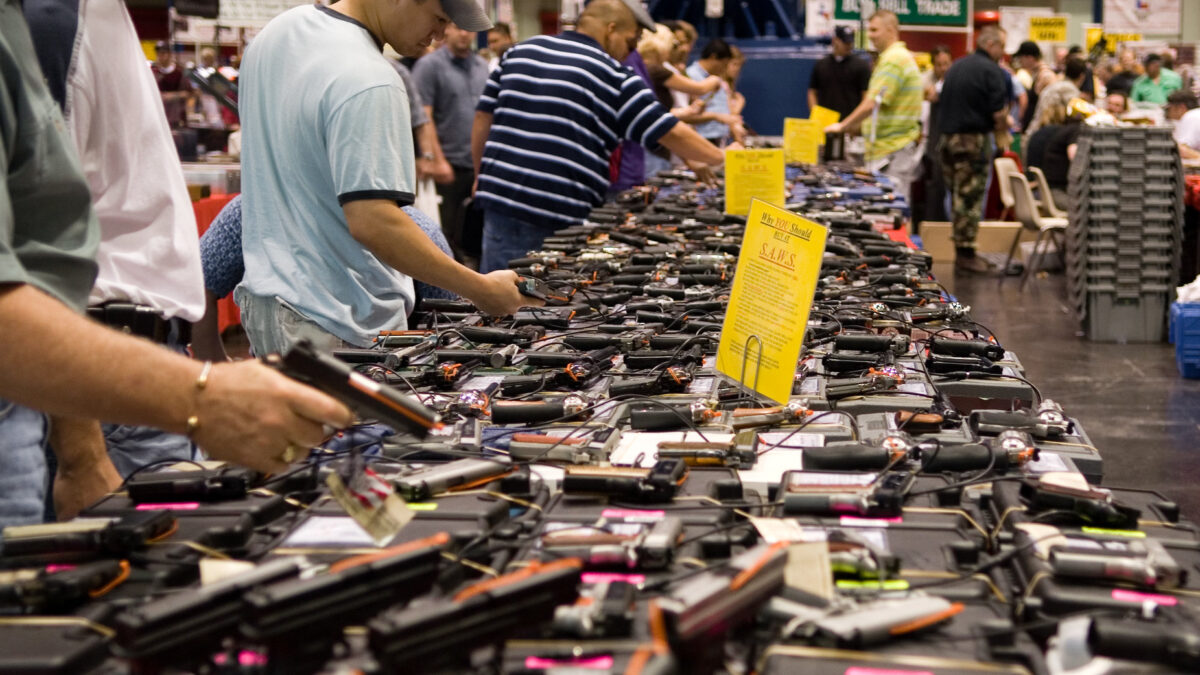
In an obscure ruling penned in an eight-paragraph letter to a little-known gun parts maker, America’s top firearms law enforcement agency reversed an earlier decision on the legal use of a gun accessory that could have major implications for industry and may even undercut more than 80 years of gun control.
Developed by military veteran Alex Bosco to help his wounded warrior friend shoot heavier handguns more easily at the local firing range, the SB-Tactical pistol stabilizing brace was largely considered a curiosity by most of the shooting public when it was released in 2013.
Intended for use on so-called AR-15 pistols — which look and function like a standard AR-15 rifle, but have barrels shorter than 16 inches and do not include a shoulder stock — the SB-Tactical brace wrapped around a user’s arm so the shooter could fire the nose-heavy pistol more comfortably and accurately one-handed. The brace is made of a flexible plastic, attaches to the back end of an AR pistol, and looks a lot like a stock.


Then Gun Enthusiasts Began Customizing
That’s where the problems started cropping up. Relegated to the deepest recesses of the gun-nut public, AR pistols were mostly considered difficult to operate and impractical to own. They inhabited a loophole in the 1934 National Firearms Act that imposed heavy taxes and registration of any rifle with a barrel shorter than 16 inches. So-called “short barreled rifles” were considered the nefarious tools of gangsters at the time, and in response to the Prohibition crime wave, Congress essentially banned SBRs from civilian ownership.
But a pistol doesn’t fall into the purview of the restrictive National Firearms Act, so a gun that functions like a rifle but doesn’t have a stock and is “intended” to be shot using one hand was considered kosher under the law.
Fast-forward 70 years, and the popularity and sheer adaptability of the AR-15 rifle posed a dilemma. The rifle’s “buffer tube” — which houses a spring and weight to help cycle the bolt during a shot — extends out beyond the butt end of the gun, making for an uncomfortable but serviceable part to press against a shooter’s shoulder. That still wasn’t enough to make the AR pistol much more than a range toy.
When the SB-Tactical brace was released, however, with a letter from the gun-law-enforcing Bureau of Alcohol, Tobacco, and Firearms saying the device didn’t turn a pistol into a rifle, the gun world went nuts. Now these AR pistols could be outfitted with a brace that functioned like a stock in a pinch and the ATF said it was all above-board. It wasn’t long before firearms enthusiasts were flocking to gun stores buying AR pistols and slapping on an SB-Tactical brace for a poor-man’s — and legal — pseudo short-barreled rifle.
When the ATF saw the hijinks, it issued a letter in 2015 that punched the industry in the gut, ruling that “misusing” the brace by putting it against your shoulder “remade” the pistol into a rifle and was therefore subject to the NFA’s draconian rules. Gun store owners shelved their pistols and shooters were scared to take their guns to the range for fear of becoming an instant felon.
But on April 25, the ATF — after a concerted effort from gun owners and SB-Tactical — has “clarified” its 2015 ruling and said as long as the brace is installed as intended and isn’t modified in any way, putting it against a shoulder doesn’t miraculously turn it into a heavily-regulated SBR.
This Affects You Even If You Don’t Use This Equipment
Most everyday gun owners might ask, so what? I don’t have one of these weird guns, so what does this have to do with me?
First off, the ruling could prove a shot in the arm to a firearms industry struggling after the election of President Donald Trump. With a full-throated endorsement from the NRA and a pro-gun campaign agenda, Trump’s embrace of gun rights has had the unintended consequence of depressing gun sales. The Obama-era panic buying is history, and that’s left a glut of “Hillary 2016” inventory sitting on shelves gathering dust — particularly AR-style rifles, which had been in the Clinton crosshairs for years.
The new stabilizing brace ruling could stir up more interest in ARs from gun buyers who might now see the pistol version as a viable option. The ATF doesn’t allow owners to convert a rifle into a pistol, but there are plenty of pistols and other AR parts manufacturers out there who could really use a business boost.
But the biggest, and perhaps most significant, effect of the ruling could be the undermining of the National Firearms Act. The technology of today has forced the feds to tie themselves in knots trying to write rules that comport to a gun law written when the Thompson submachine gun was the biggest threat and revolvers ruled the handgun world.
What is a pistol? What is a rifle? Why does a stock make a pistol a rifle? Why does a vertical foregrip make a pistol an “Any Other Weapon” under ATF rules? It’s because the laws intended to ban what was around at the time, and times have changed a lot since then.
These days gun owners know there’s zero difference whatsoever between a 10-inch-barreled AR-15 with a padded buffer tube and one with a true buttstock. Both do the exact same thing to a target, but one costs an extra $200 in taxes and a nine-month wait for registration, and the other does not. With new technology like the pistol brace challenging the boundaries of nearly century-old gun laws every year, it’s only a matter of time before the NFA dies a lonely death of bureaucratic irrelevance.









